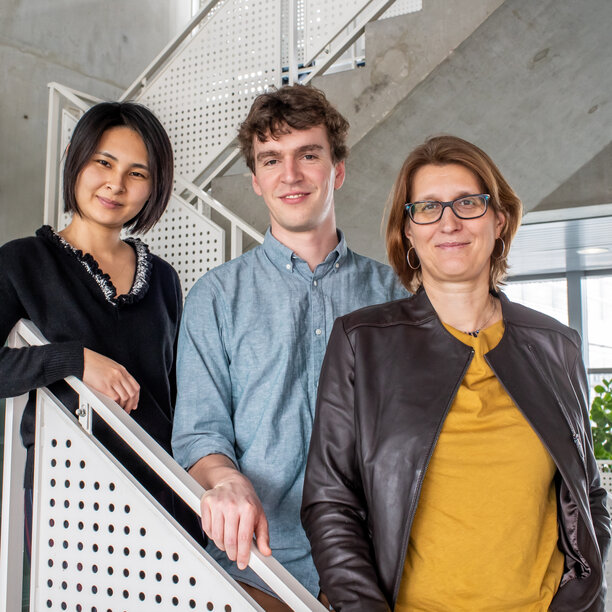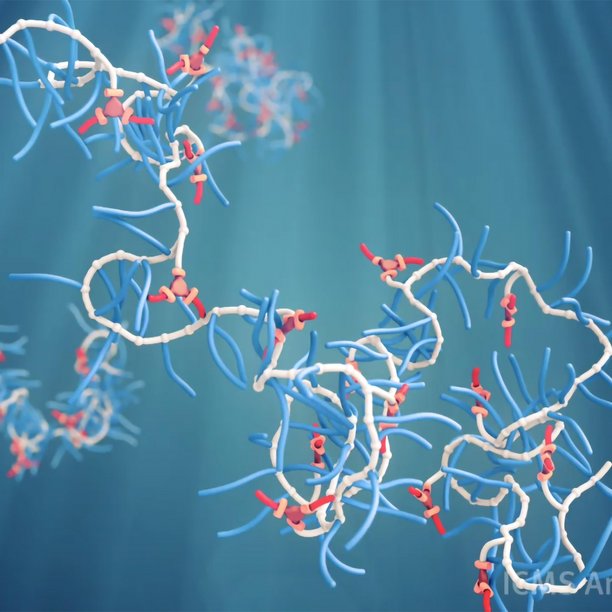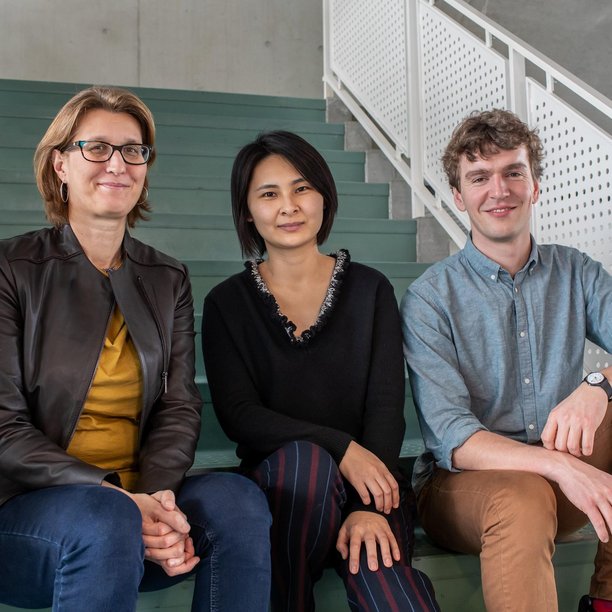This interview reveals aspects of the Molecular Systems and Materials Chemistry cluster’s work in the area of supramolecular chemistry and catalysis (Professor Anja Palmans), responsive functional materials and devices (Assistant Professor Danqing Liu) and complex supramolecular systems (PhD candidate Mathijs Mabesoone).
What have you focused on during the past 12 months?
Anja: “I have been closely involved in fundamental research that investigates methods for folding single polymer chains into well-defined nanoparticles with the ultimate aim of producing synthetic enzymes. We now have a good basic understanding of how to control this folding process in order to mimic the behaviour of enzymes, which are the catalysts of nature’s biochemical networks. Why is that important? To cut a long story short, this brings us a step closer to delivering specifically designed drugs, prodrugs, to targeted cells in the body. In theory, the polymer will fold around a catalyst that triggers a specific chemical reaction to preferentially activate prodrugs near a specific type of cell. The polymer acts as a delivery package and protects the catalyst. The idea is to get the polymer safely through a hostile and highly competitive environment and accumulate it at the target site. This allows administration of the prodrug, which is only activated there when needed. Incredibly exciting and rewarding research!”
Danqing: “I have been working on dynamic surface topographies. We use liquid crystal structures in a polymer network to engineer thin-film coatings that swell or contract in response to stimuli such as light, heat or an electric field. You can also create surface patterns with this technology, with a height difference of a thousandth of a millimetre between the different structural arrangements. That doesn’t sound like much, but you can see and feel it quite distinctly, particularly when the structures are made to move.”
Mathijs: “I am particularly proud of my contribution to a paper on the use of alcohol cosolvents in oils to control supramolecular structure. This work, carried out in collaboration with the Riken Institute in Japan, demonstrates how combining computational simulations and experiments allows us to unravel new phenomena in one-dimensional supramolecular polymers and exploit these phenomena to design new material properties. This opens up a door to further exciting research.”
TU/e is obviously recognised as a leading university in chemistry and chemical engineering. Would you recommend TU/e to other academics looking for research opportunities?
Anja: “I love it here. The TU/e is a great place to work and well-situated in the Netherlands. The connections to the rest of the world are also excellent. It’s quite rural, which I like, and there is a good focus on fundamental research, the area that interests me most. And the lab facilities really are among the best in the world. The thing that stands out most though is the willingness to collaborate with each other and the interplay between engineering and chemistry. So yes, I would recommend Eindhoven and TU/e to colleagues without a second thought.”
Danqing: “I can echo that: the facilities are great and the knowledge in our group is world-leading. The teaching aspect also interests me: I’m looking forward to teaching a new course for students from other disciplines. Eindhoven offers an ideal mix: good funding, because the links to industry here are so strong, fundamental research in the lab and then applied science hand-inhand with industry leaders. The career prospects at TU/e are also good.”
Mathijs: “Having worked in labs on several continents, I particularly enjoy the excellent infrastructure, great atmosphere and exceptionally strong collaborative spirit in Eindhoven. The facilities in the laboratories greatly facilitate the fundamental science I do, and I very much enjoy the fascinating and refreshing interaction with chemists who focus on the applied science aspects.”


